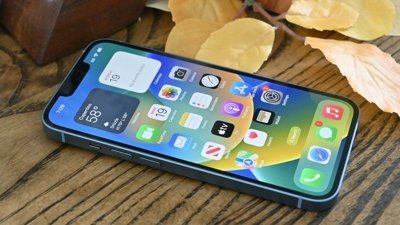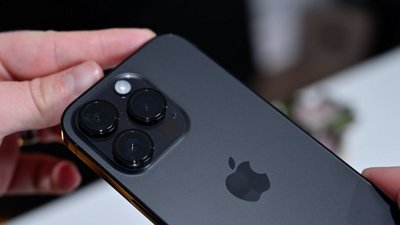Apple announced the iPhone 14 and iPhone 14 Plus during the "Far Out" Apple event on September 7, 2022. Both the iPhone 14 and iPhone 14 Plus could easily be mistaken for their predecessors, minus the larger 6.7-inch model.
Despite minimal external updates, Apple pushed these base models forward with several user-facing updates and quality-of-life improvements. The iPhone 14 Pro lineup saw more significant changes that widened the gap between iPhone 14 Pro and iPhone 14 models, but customers have a clear throughline for features and prices from top to bottom.
iOS 17 was revealed during WWDC 2023, and features were mostly universal across Apple's ecosystem. A handful of features were tailored to iPhone 14 Pro, and its always-on display and Dynamic Island, but some features still work on the standard models.
New iPhone models
Apple revealed the next generation of iPhones during the Wonderlust event on September 12, 2023. Four new models were introduced, including updates to the standard models.
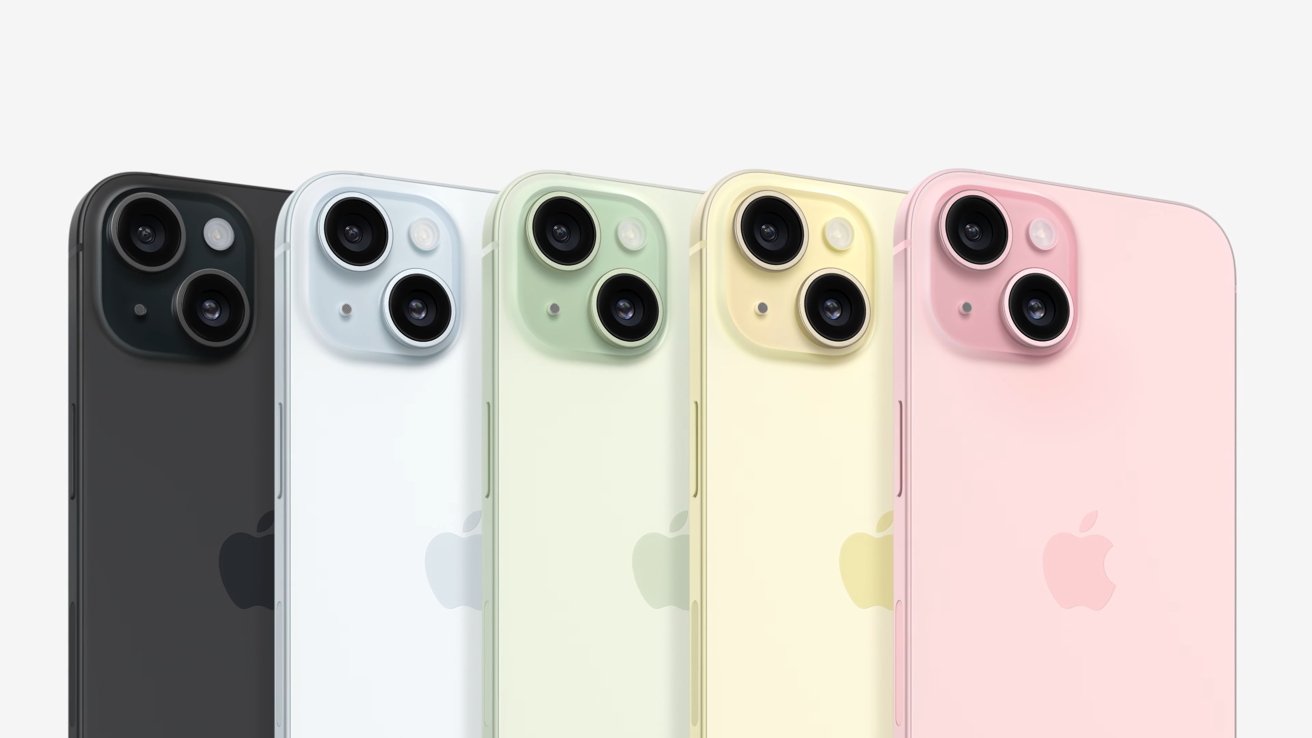 iPhone 15 and its muted color options
iPhone 15 and its muted color optionsThe iPhone 15 and iPhone 15 Plus introduced multiple new features despite being non-pro models. Updates include a 48MP Main Camera, the Dynamic Island, and a USB-C port.
The aluminum frame is slightly curved on one edge to increase comfort and grip. The back glass is one solid piece, including the camera bump, to improve repairability.
These devices run the A16 Bionic and have USB 2.0 Type C ports. Battery life didn't change, but the Ultra Wideband chip was upgraded for improved location-based abilities.
The iPhone 15 Pro and iPhone 15 Pro Max have the A17 Pro, which enables them to run Apple Intelligence.
With the release of iPhone 16, Apple has stopped sale of all iPhone 14 models except the base option.
iPhone 14 Pro and iPhone 14 Pro Max Features
As with the iPhone 13 generation, Apple kept features identical across device classes. So, even though there are two sizes of pro iPhones, they have the same feature set. The only things that differentiate the two are size and battery life.
Apple's usual year-over-year upgrade cycle includes minor changes to a handful of specs and maybe a single tentpole feature. However, for the iPhone 14 Pro lineup, several aspects were updated that affect everyday use.
iPhone 14 Pro - Design
At first glance, most won't notice how the 2022 iPhone has changed. The iPhone 14 Pro is instantly recognizable by the flat sides, curved corners, and large camera bump.
 The iPhone 14 Pro design hasn't changed much from the previous model
The iPhone 14 Pro design hasn't changed much from the previous modelThe camera bump is slightly larger this generation, if only because the lenses have all been upgraded. Cases from previous models will not fit because of the bump, but also the dimensions are slightly bigger too.
Apple did not include a SIM card slot in models sold in the United States. Customers will use the e-SIM feature instead to access cellular providers.
Button placement, speakers, Lightning port, and Face ID are all the same. The display has thinner bezels, more touchable surface area, and a small pill shape in place of the notch.
Four colors are available: deep purple, silver, gold, and space black.
Apple implemented a new, more repairable interior design for the standard iPhone 14 and iPhone 14 Plus but did not do so for the iPhone 14 Pro models. The increase in repairability relies on a new central aluminum core that houses all of the components, making the front and back glass separate and removable components.
The iPhone 14 Pro and iPhone 14 Pro Max do not have this new system, and the back glass remains fused to the frame. It isn't clear why Apple didn't introduce this new system into the more premium models, but cost, cooling, or material issues may have introduced obstacles.
iPhone 14 Pro - Dynamic Island
Apple introduced Face ID with the iPhone X. It used a series of six sensors hidden behind a notch to perform biometric authentication.
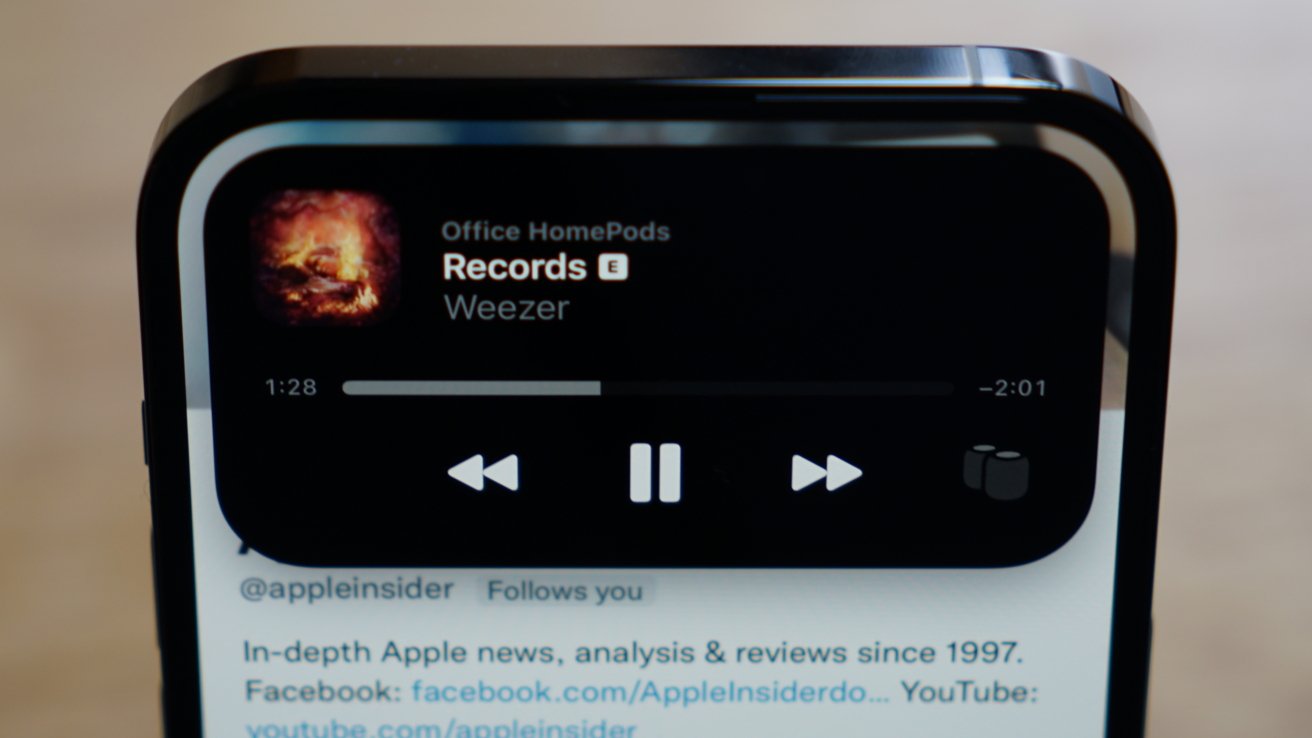 A combination of hardware and software dynamically obscures the Face ID sensors
A combination of hardware and software dynamically obscures the Face ID sensorsFor iPhone 14 Pro and iPhone 14 Pro Max, Apple opted for a new option called the Dynamic Island. Rumors suggested Apple would use a "pill and hole cutout" to obscure the Face ID sensors, which ultimately did come to pass.
Instead of showing these separate components in the display, Apple chose to obscure them using an interactive UI. The Dynamic Island is an animated part of the display that shows Live Activities, notifications, and more while keeping the Face ID cutout covered.
Tap on the Dynamic Island to open the current app being shown, or press and hold to see a UI overlay. For example, pressing and holding on playing music will show the play/pause and skip controls above the current interface.
iPhone 14 Pro - Always-on display
Like the Apple Watch before it, the iPhone 14 Pro can now take advantage of its variable refresh rate display to keep it always on. By lowering the refresh to 1Hz, dimming the wallpaper, and using darker UI elements, the iPhone can keep information on the display at all times.
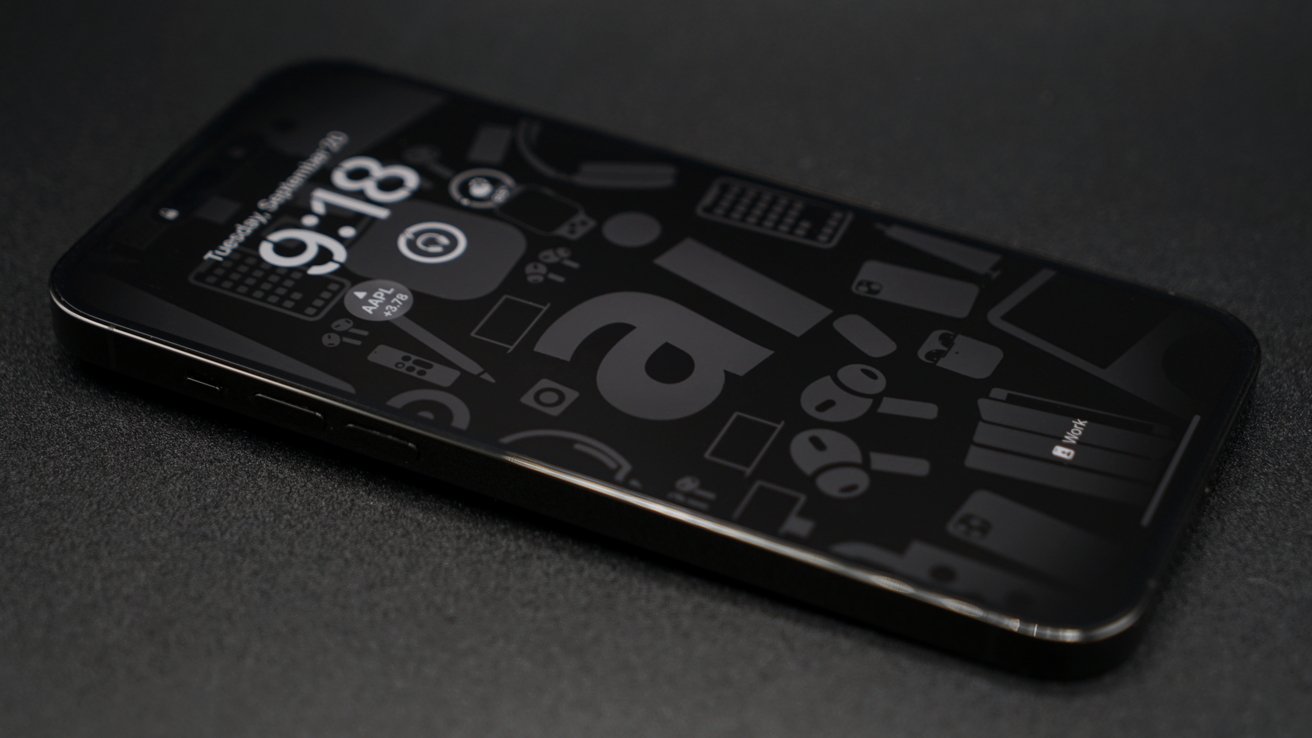 The always-on display keeps the wallpaper, clock, widgets, and Live Activity visible
The always-on display keeps the wallpaper, clock, widgets, and Live Activity visibleApple has designed the always-on display to use as little power as possible while providing up-to-date information. Live Activities, widgets, and the clock will still update regularly.
Some Lock Screen wallpapers made by Apple have entirely different looks for the always-on mode. For example, the clownfish wallpaper takes on a green night vision effect.
Other wallpapers, like ones made with photos, will intelligently dim using machine learning. Apple says images containing people will preserve skin tones even when dimmed.
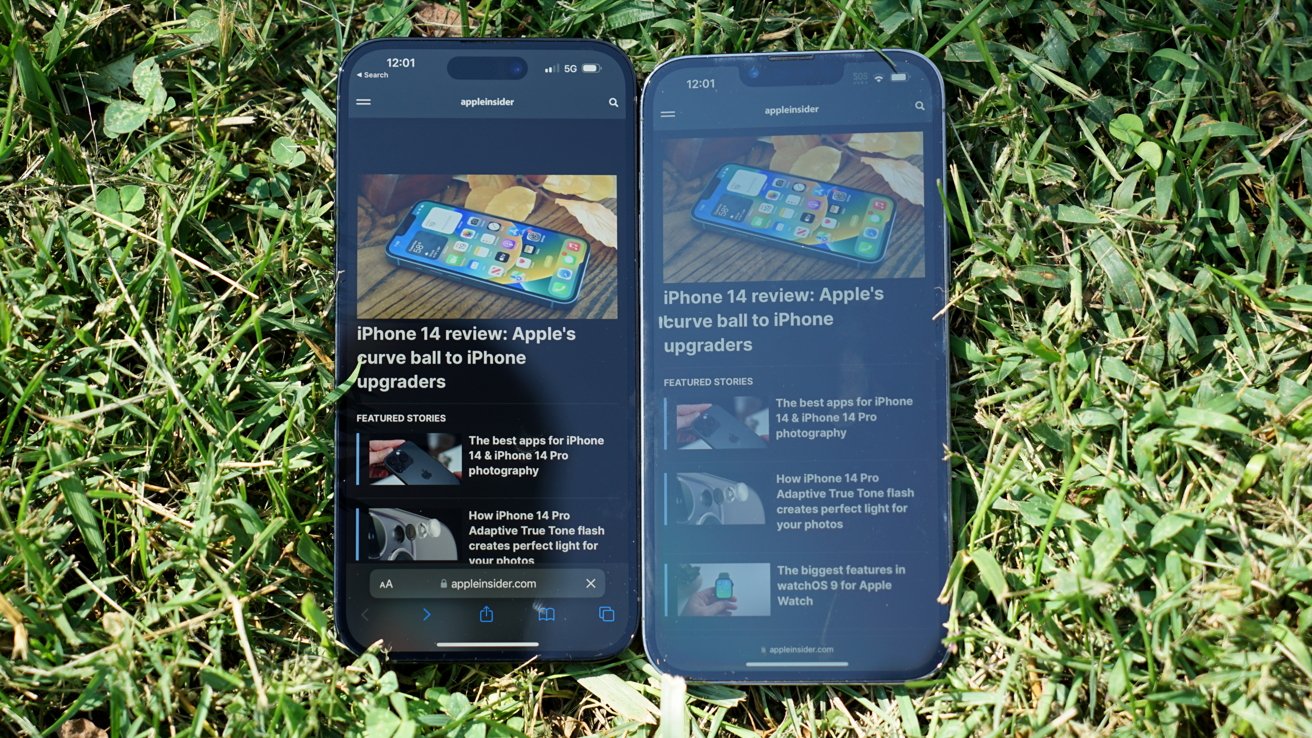 The display can be twice as bright at 2,000 nits
The display can be twice as bright at 2,000 nitsThe display will turn off when the iPhone is face down or in a pocket to preserve battery power. The display can also brighten up to 2,000 nits in direct sunlight for improved visibility.
Using the Sleep Focus will disable always-on, and so will CarPlay, Continuity Camera, and Low Power Mode. Apple Watch users who step away from their iPhones will disable the always-on based on proximity.
Cameras
All four cameras were updated for the iPhone 14 Pro to let in more light, plus the A16 Bionic has an improved image signal processor. Larger image sensors, a 48MP Main Camera, and the new Photonic Engine make every photo pop.
Photonic Engine
Apple reworked its image pipeline so the Deep Fusion process could happen earlier in the process. This preserves color and texture data for more lifelike photos.
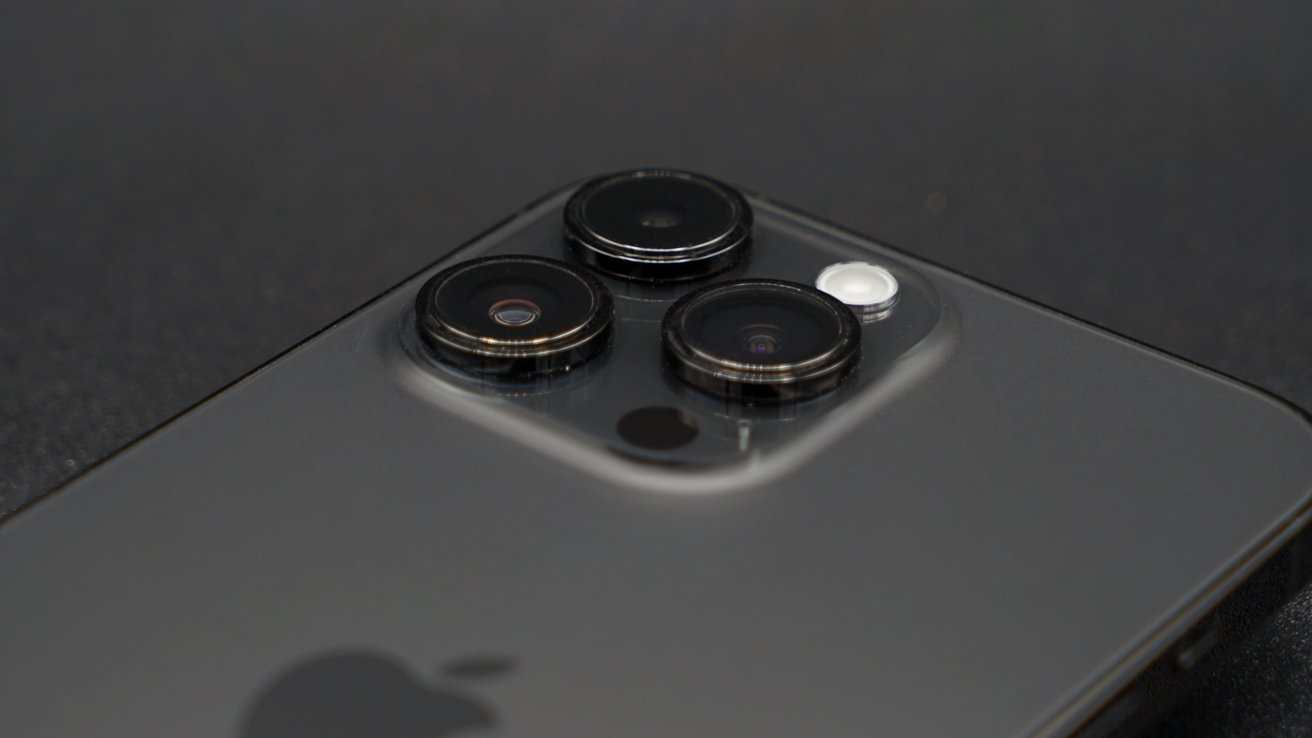 All the cameras perform better thanks to the Photonic Engine
All the cameras perform better thanks to the Photonic EngineDeep Fusion was introduced previously as a method to make medium light photos gain more detail. The iPhone 14 Pro takes multiple stills and combines them into a single well-exposed photo with sharp detail.
The feature has expanded to be used in more lighting situations, and with bigger, brighter sensors, it works in dimmer environments than before.
Main Camera
The Main Camera, formerly referred to as the Wide Camera, has a 48MP sensor with an f/1.78 aperture. This is a big jump from the 12MP sensor used previously, though photos will still be 12MP after processing, thanks to pixel binning.
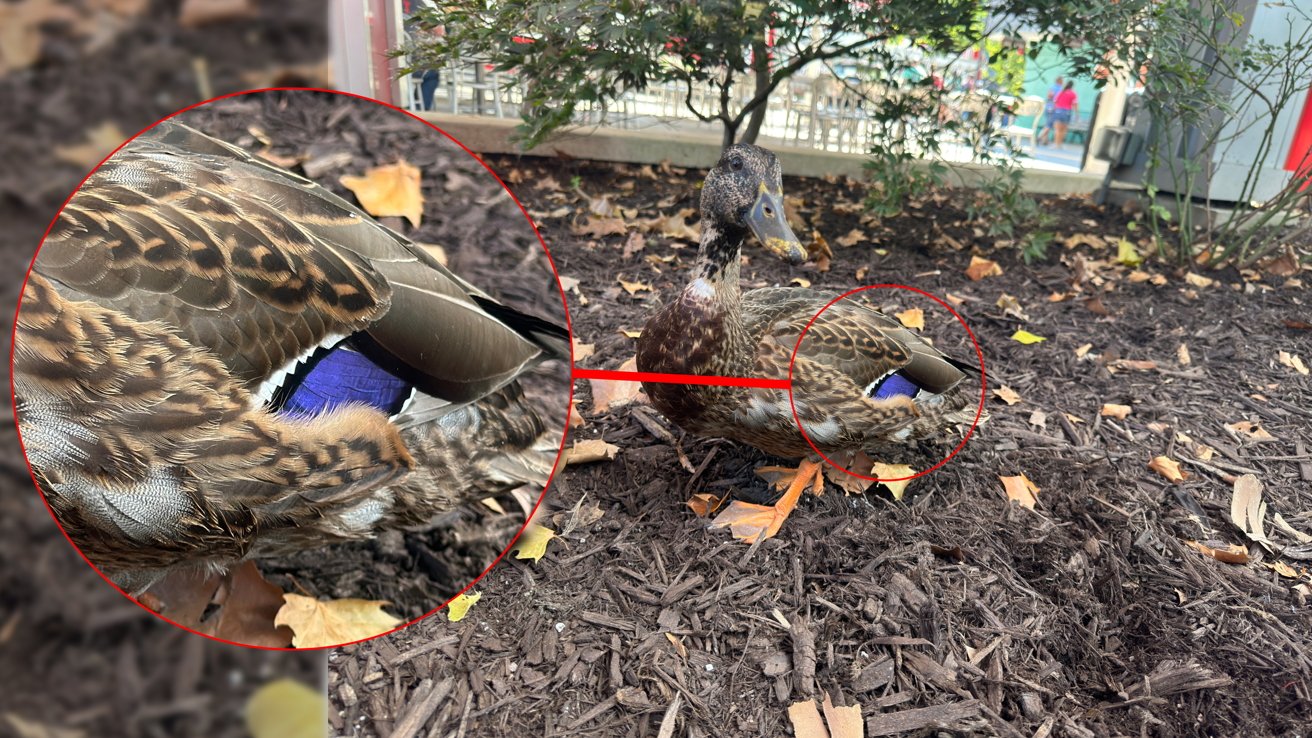 Get highly detailed 48MP photos using ProRAW
Get highly detailed 48MP photos using ProRAW48MP images are very large, both when printed out and in the file system. Users who generally look at photos on the web or their smartphone won't need such large image files, so Apple uses pixel binning to provide crisp and bright 12MP images instead.
There are multiple advantages to using a large megapixel sensor beyond pixel binning. A 2x zoom has been added as a crop of the sensor but still provides better specs than Apple's previous 2x telephoto.
Pro users can take advantage of the full 48MP when taking ProRAW images, but this may require better-than-average lighting for optimum performance. Taking photos using this method will produce huge image files of 50MB or greater, but it gives the photographer maximum data for editing while preserving the Photonic Engine pipeline.
Ultra Wide Camera
The Ultra Wide Camera was updated with a larger sensor that allows 3x more performance in low-light conditions. When combined with the Main Camera, it uses its autofocus to take macro photos.
The effective focal length of this lens is 13mm. Apple still calls it 0.5x in the Camera app software, but it is slightly more than half of the Main Camera's 24mm focal length.
Telephoto Camera
The Telephoto Camera wasn't updated, but the Photonic Engine and improved ISP enables up to 2x low-light performance. This translates to better low-light zoom, improved portrait mode, and better video.
 Twice as much low-light performance means more detailed shots in a dim room
Twice as much low-light performance means more detailed shots in a dim roomApple also threw in a new focal length, 2x or 48mm. This lens is purely digital and exists as a crop of the 48MP Main Camera. Despite being a crop, it is still a better camera than the dedicated 2x lens found on previous pro iPhones.
Selfie Camera
Even the selfie camera was updated with 2x low-light performance improvements, autofocus, and an f/1.9 aperture. Autofocus means group shots will look much better as the camera adjusts for more faces.
Autofocus also works with the True Depth sensors to focus faster. The 12MP sensor, combined with other improvements, will make close-up selfies and other photos look sharper and brighter than ever.
Ports and battery life
The Lightning port returns for at least one more update, but the "iPhone 15" is rumored to get USB-C. Nothing was changed between generations, as it still fast charges using a 20W adapter.
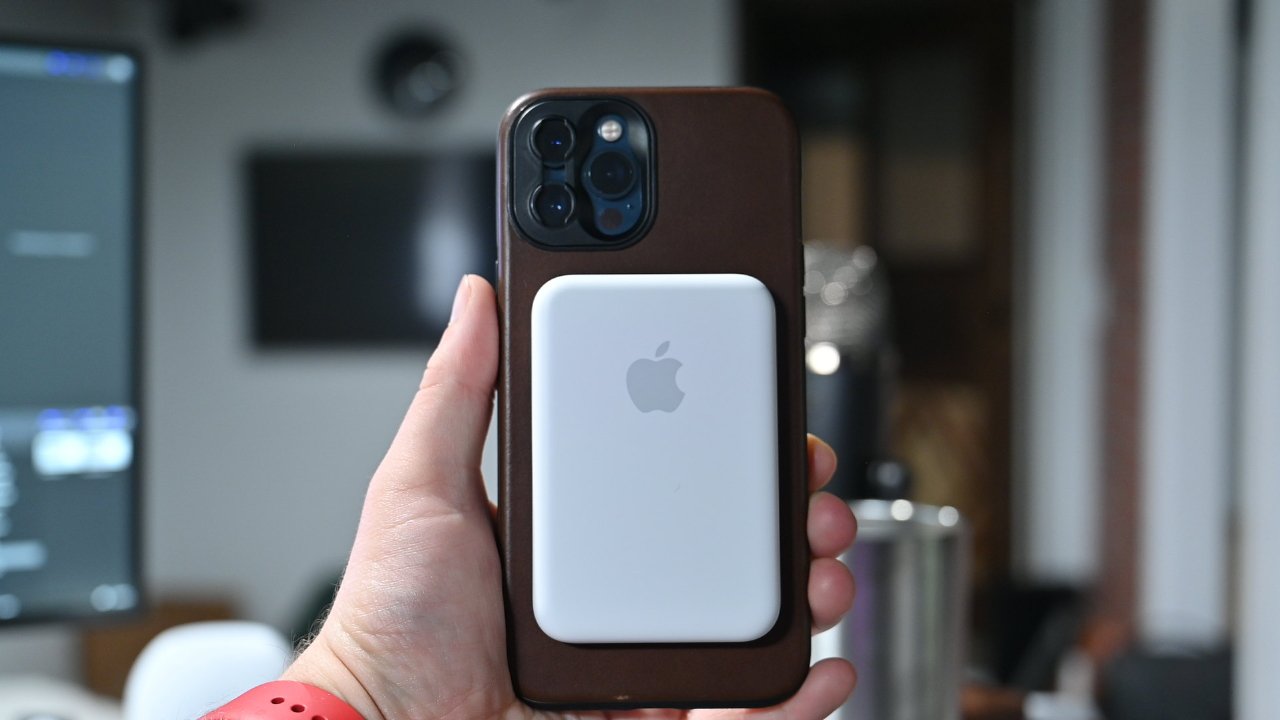 MagSafe connects accessories and chargers using magnets
MagSafe connects accessories and chargers using magnetsMagSafe wasn't changed or updated in any way, either. The magnetic accessory and charging system is backward compatible and still charges at a 15W speed.
Apple says the battery life isn't affected by the new features. The iPhone 14 Pro is rated for 23 hours of video playback, and the iPhone 14 Pro Max is rated for 29 hours.
Fast charge either device at 20W for 30 minutes to get 50% battery.
Processor, biometrics, wireless
The A16 Bionic has a 6-core CPU and 5-core GPU with a Neural Engine that performs 17 trillion operations per second. These specs translate to a faster iPhone that is also more efficient.
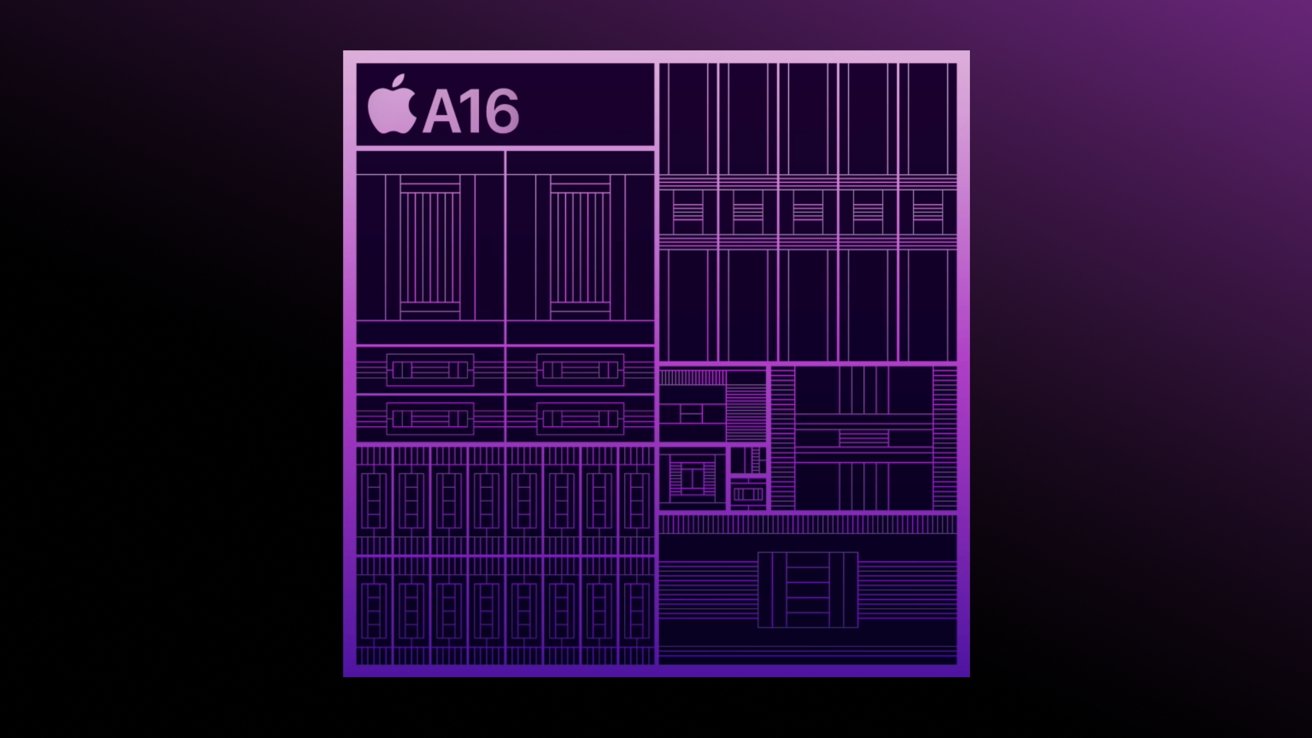 The A16 Bionic is faster and more efficient than the A15 it replaces
The A16 Bionic is faster and more efficient than the A15 it replacesApple stuck with Face ID for the biometric authentication system. It uses a more compact sensor stack with the proximity sensor placed behind the display.
WiFi 6, U1 Ultra Wideband, and 5G remain identical. Apple did upgrade to Bluetooth 5.3, which offers higher bandwidth. AirPods Pro 2 also use Bluetooth 5.3, which appears to have minimal benefits.
Added yellow color
Apple announced a new yellow color option for the iPhone 14 and iPhone 14 Plus via a press release in March 2023. The company has released a new color option in the spring over the last few releases to drive a spike in sales in an otherwise quiet quarter.
The color is limited to the standard iPhone 14 models, and the iPhone 14 Pro model did not get a new color. This is likely due to the iPhone 14 Pro lineup already having a muted gold option that would be too similar to yellow.
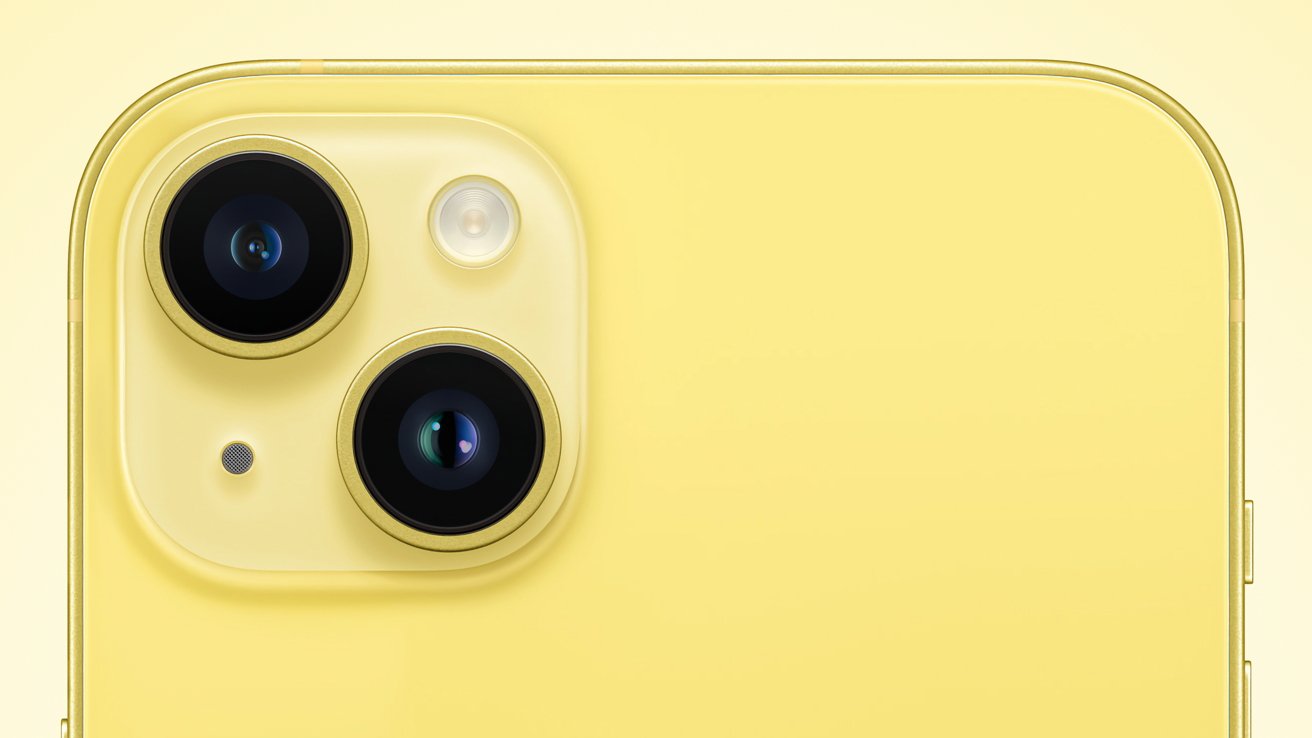 Yellow joins Apple's other color options for iPhone
Yellow joins Apple's other color options for iPhoneThere is nothing functionally different about the yellow color option. It is priced identically and comes with the same storage options.
iPhone 14 and iPhone 14 Plus Features
Apple has continued the approach of offering identical feature sets across models in the same device class. Therefore, there are no exclusive features for the larger iPhone 14 Plus besides the display size and battery life.
Note that there isn't an iPhone mini in this generation. The 5.4-inch display size was eliminated in favor of the larger 6.7-inch model, allegedly due to a lack of demand for smaller iPhones.
After months on the market, it seems less an issue with demand for a smaller iPhone versus demand for a fourth iPhone outside of the standard, pro, and pro max models. Compared to the rest of the iPhone 14 lineup, the plus model hasn't been selling as well.
Apple announced a handful of new features for iOS 17 that will benefit most of its existing products. Some will be more useful for iPhone 14 Pro thanks to its always-on display, like StandBy, but that doesn't mean standard iPhone 14 models are being left out.
Design
Besides some slight color changes, the iPhone 14 looks nearly identical to the iPhone 13 it replaces. The notch, diagonal rear camera system, and aluminum chassis are the same. The 6.1-inch Super Retina XDR display is 460ppi.
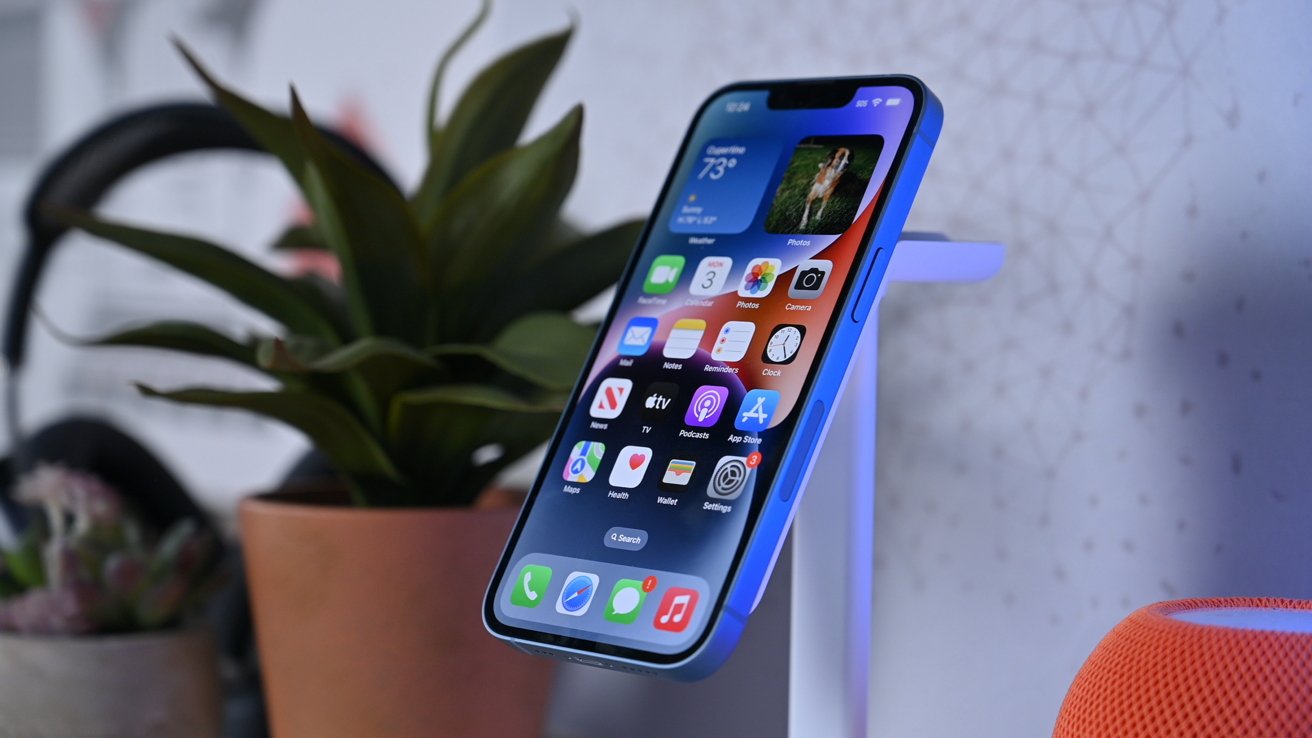 The design hasn't changed year over year
The design hasn't changed year over yearThe bigger iPhone 14 Plus is a new model but takes on all aspects of the smaller version, including the same-sized camera bump. It uses a 6.7-inch Super Retina XDR display at 458ppi. However, it does not have ProMotion like the pro model size it is emulating.
Like the iPhone 13, the iPhone 14 displays support HDR, True Tone, and have a P3 color gamut. The OLED screen on the iPhone 14 offers a 2 million to 1 contrast ratio and 800 nits of brightness in normal use.
The only notable design alteration is the lack of a SIM card tray in the U.S. version of the iPhone 14. Apple has gone all-in on e-SIM support, so users won't have to bother with physical cards anymore.
Internally, the design has changed considerably. Apple reconfigured the logic board and other systems to rely on a central aluminum core for support. This enables the front and back glass to be much easier to remove — vastly increasing repairability.
Cameras
Apple updated the newly dubbed Main Camera, formerly referred to as the Wide Camera, with a larger 12MP sensor with a wider f/1.5 aperture. This enables higher-quality photos and faster low-light performance from the iPhone 14. Apple clocks this at a 49% improvement in low light.
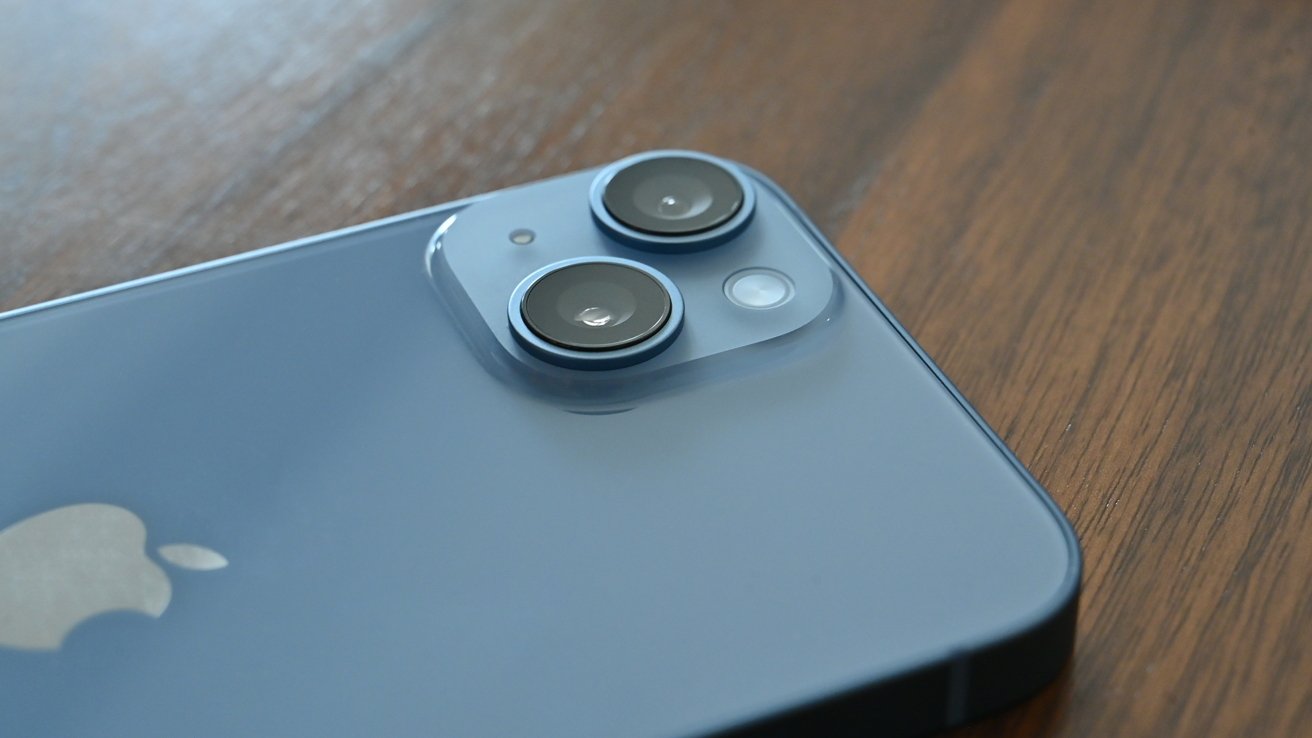 The 12MP Main Camera on the iPhone 14 has better low-light performance
The 12MP Main Camera on the iPhone 14 has better low-light performanceThe Ultra Wide Camera is unchanged, and there was no mention of the macro photography feature coming to non-pro phones. Apple would need to add autofocus to the Ultra Wide Camera to enable the feature.
The selfie camera is improved with an f/1.9 aperture and autofocus. When combined with the depth sensors used for Face ID, the selfie camera can take better photos faster.
Also, improvements in the chipset enable 4K recording when using Cinematic Mode. Users can set 30fps or 24fps and take advantage of the better camera performance.
Emergency SOS via satellite
Apple developed special antennas and equipment so the latest iPhone 14 models could connect to a satellite miles above the Earth's surface without a giant antenna module. This system is meant primarily for emergency purposes.
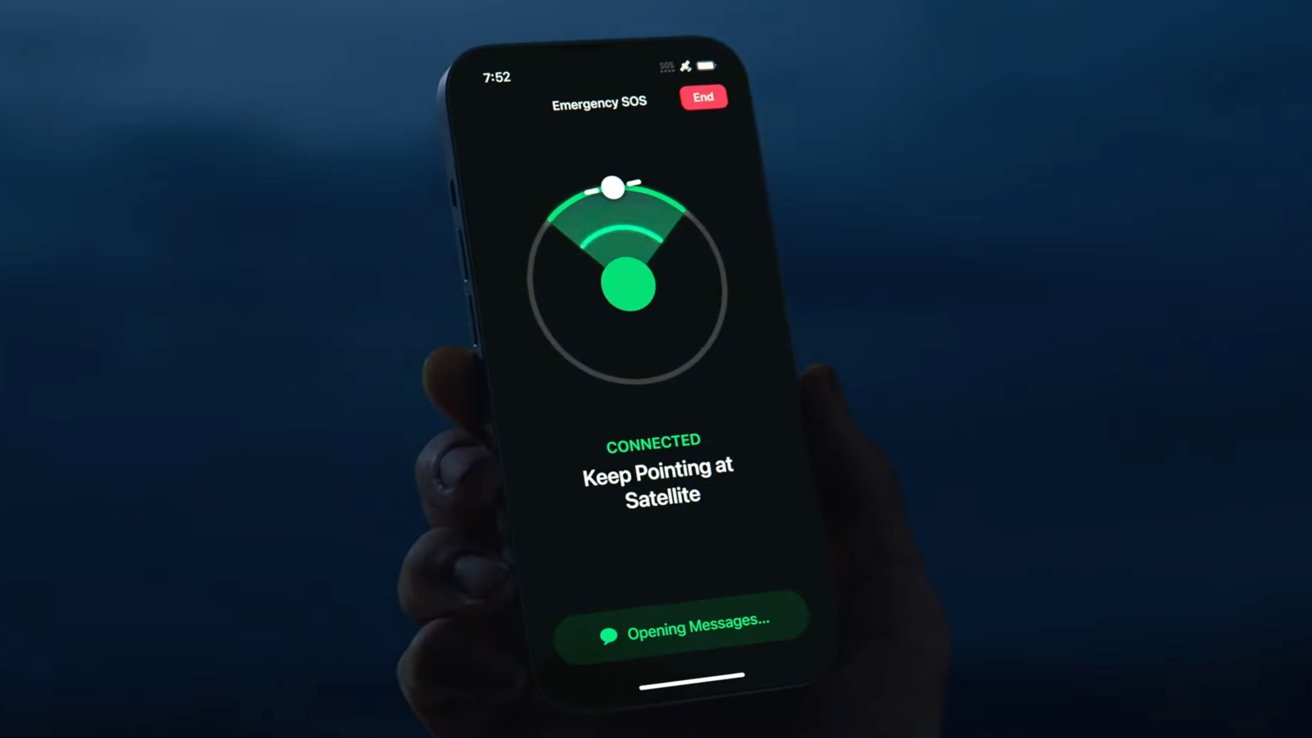 Communicate via satellite in emergency situations
Communicate via satellite in emergency situationsWith a clear view of the sky or below light foliage, a user with an iPhone 14 can activate Emergency SOS via satellite to send out a distress signal. The device will walk the user through prompts to ensure communication is kept short while being detailed.
UI on the display shows the user which direction to point the iPhone to get the best signal from the satellite. Messages sent using this method can take anywhere from 15 seconds to several minutes to relay.
There's a non-emergency use for this as well. If a user wants to update friends or family on their location in the wilderness, the iPhone can use a satellite signal to relay that location data.
A short demo of this feature is available within the Settings app to help users familiarize themselves with how it works. This way, in a true emergency, it won't be the first time a person has seen the system in action.
Emergency SOS via Satellite launched to customers in November 2022. The service will be free until late 2024.
Crash Detection
The iPhone 14 lineup, Apple Watch Series 8, second-generation Apple Watch SE, and Apple Watch Ultra have purpose-built sensors and algorithms for Crash Detection. If the user is in a severe car crash, the iPhone or Apple Watch will contact emergency services.
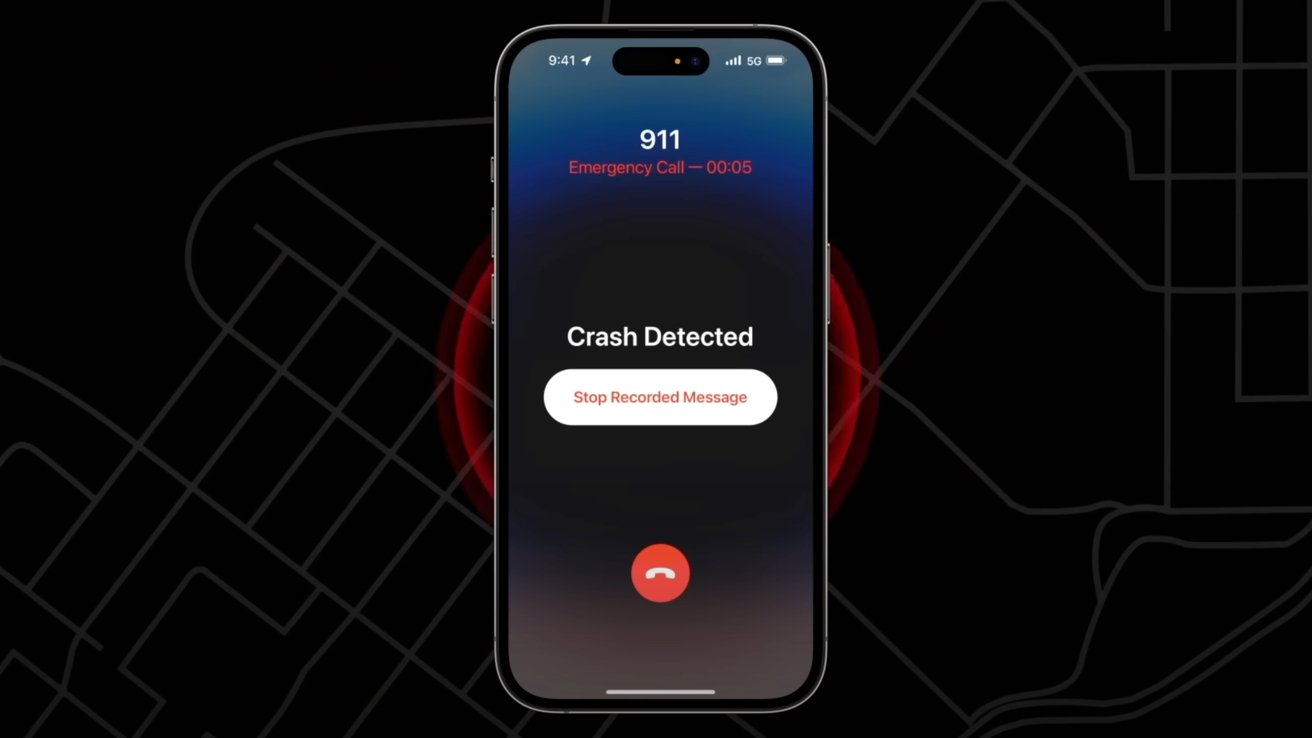 The iPhone 14 will contact emergency services if a severe crash is detected
The iPhone 14 will contact emergency services if a severe crash is detectedIf both devices are present, they will work in tandem to determine if a crash has occurred. The technology isn't foolproof, however, and can be triggered by non-crash events like some roller coasters.
Crash Detection in the iPhone 14 utilizes an upgraded high dynamic range gyroscope, high g-force accelerometer, barometer, GPS, microphone, and advanced motion algorithms to determine if a severe crash occurred. Apple designed the algorithm to detect front impacts, side impacts, rear-end collisions, and rollovers.
If the user doesn't dismiss the alert in ten seconds, another ten-second timer starts. After that, emergency services are contacted.
An automated message with an estimated location and search radius will be played to the emergency services on a loop. Each replay will play back quieter to give the user a chance to speak to emergency services, and a button can be pressed to stop the recorded playback.
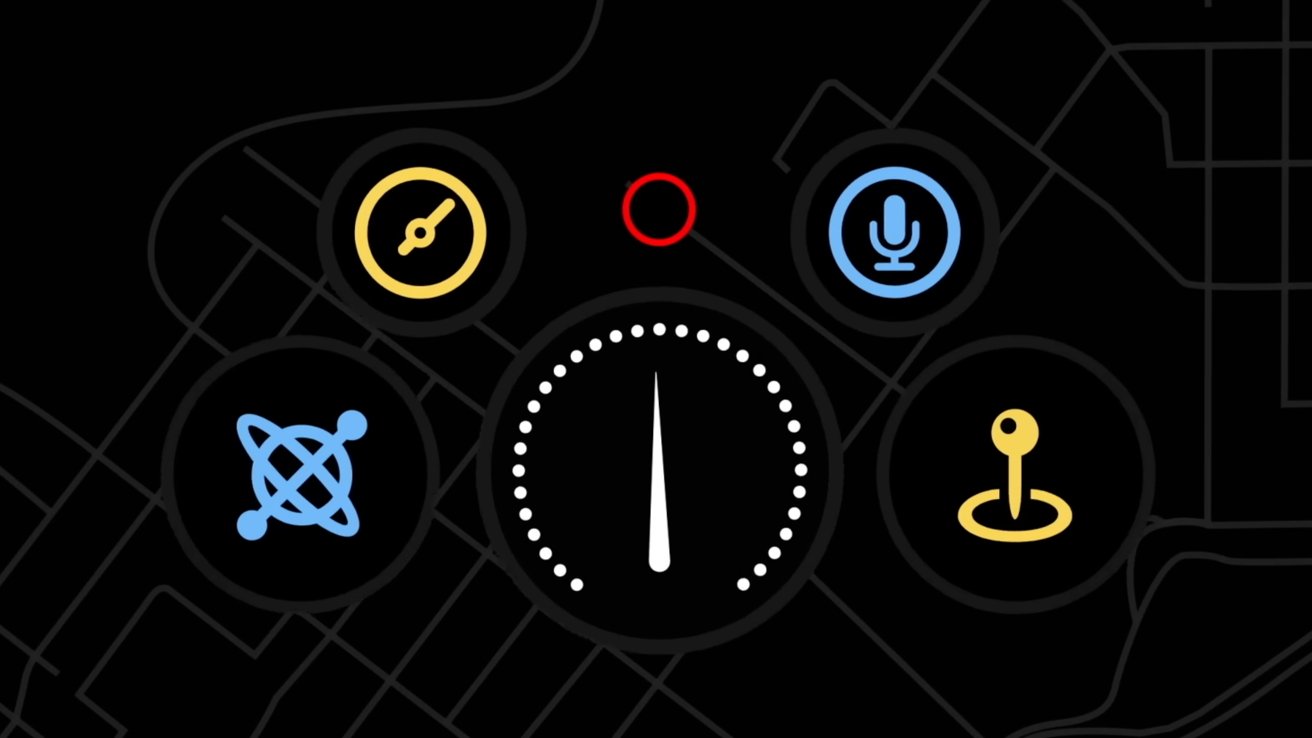 Multiple sensors and an advanced algorithm determine if a crash has occurred
Multiple sensors and an advanced algorithm determine if a crash has occurredAfter hanging up with emergency services, a call will be placed to emergency contacts. A ten-second timer will appear that can be dismissed before the call goes out.
Minor collisions will not trigger Crash Detection. The accelerometer can detect up to 256G of force, and it uses the data collected from other sensors to determine if a crash occurred.
Some users have reported false crashes have been detected on roller coasters, but the results are varied. Apple says that there isn't a "silver bullet" description that nails down exactly when Crash Detection activates since the algorithm has so many factors.
Emergency responders continue to complain about Crash Detection in iPhone and Apple Watch. It has led to a wave of false positives that affect resources for real emergencies.
Ports and battery life
The Lightning port remains even as rumors point to USB-C in the 2023 "iPhone 15." Speculation had suggested Apple might move to a 30W fast charging speed, but Apple kept it at 20W for the iPhone 14.
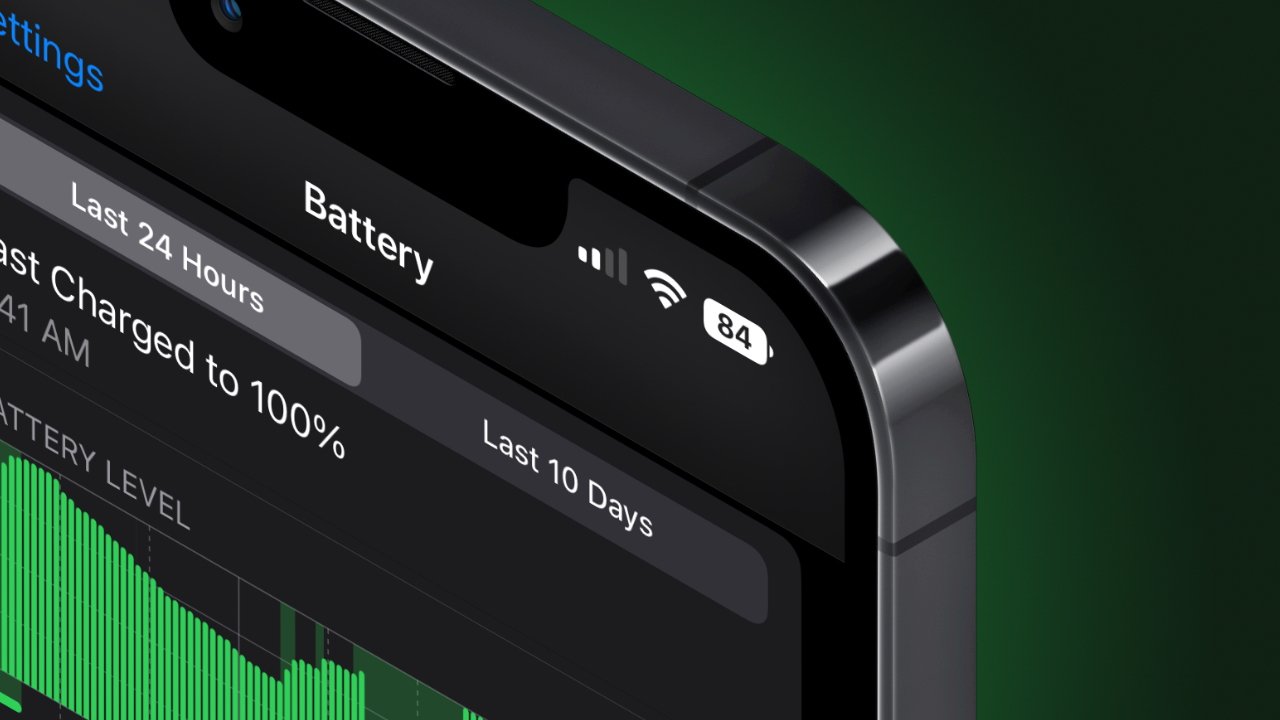 The battery life increased thanks to efficiency improvements
The battery life increased thanks to efficiency improvementsApple claims the battery life has improved, placing the smaller 6.1-inch iPhone at 20 hours during normal use. The iPhone 14 Plus can last up to 26 hours and is the highest-rated battery life in an iPhone.
Both models have fast charge support, officially rated at 20W. So, plug the iPhone into a 20W charger to get a 50% charge in about 30 minutes.
MagSafe accessories and charging are also supported with no change over previous generations. Magnets align products to the center of the iPhone, though some designed with older camera bumps in mind may have trouble attaching to some models.
Processor, biometrics, wireless
Apple reserved the latest A16 Bionic for the iPhone 14 Pro lineup, leaving the iPhone 14 with the A15 Bionic. This isn't the same processor used by the iPhone 13. Instead, it is the iPhone 13 Pro's version.
It has a 6-core CPU with 2 performance cores and 4 efficiency cores. The A15 also has a 15-core Neural Engine for improved processing of machine learning algorithms.
 Apple used the iPhone 13 Pro A15 Bionic in the iPhone 14
Apple used the iPhone 13 Pro A15 Bionic in the iPhone 14It has a 5-core GPU, enabling improved processing in some apps and across the system. This updated processor is also why the iPhone 14 gets access to the updated 4K Cinematic Mode.
Face ID hasn't been updated and still lives behind the same-sized notch as iPhone 13. However, thanks to iOS 16, users can unlock their iPhone 14 in portrait or landscape orientation.
WiFi connectivity, 5G, and the U1 were not updated for the iPhone 14 lineup. However, Apple did include the newer Bluetooth 5.3 spec. The AirPods Pro 2 also use Bluetooth 5.3, but no information was provided to explain the benefit of this newer standard.
iPhone 14 Review
The iPhone 14 is a solid flagship phone with a decent mix of features for the price. However, existing iPhone models make it a hard compare.
The camera system has some small improvements but the overall photo quality is about the same. The selfie camera is better too, but only just.
Crash Detection will surely be another feature we hear testimonies about on a regular basis. The high dynamic range gyroscope and dual-core accelerometer sense up to 256g of force to determine if a crash has occurred.
Apple also included the new SOS via satellite feature for contacting emergency services without cell signal. While very few users will ever need to use it, knowing it is there for that rare case provides some peace of mind.
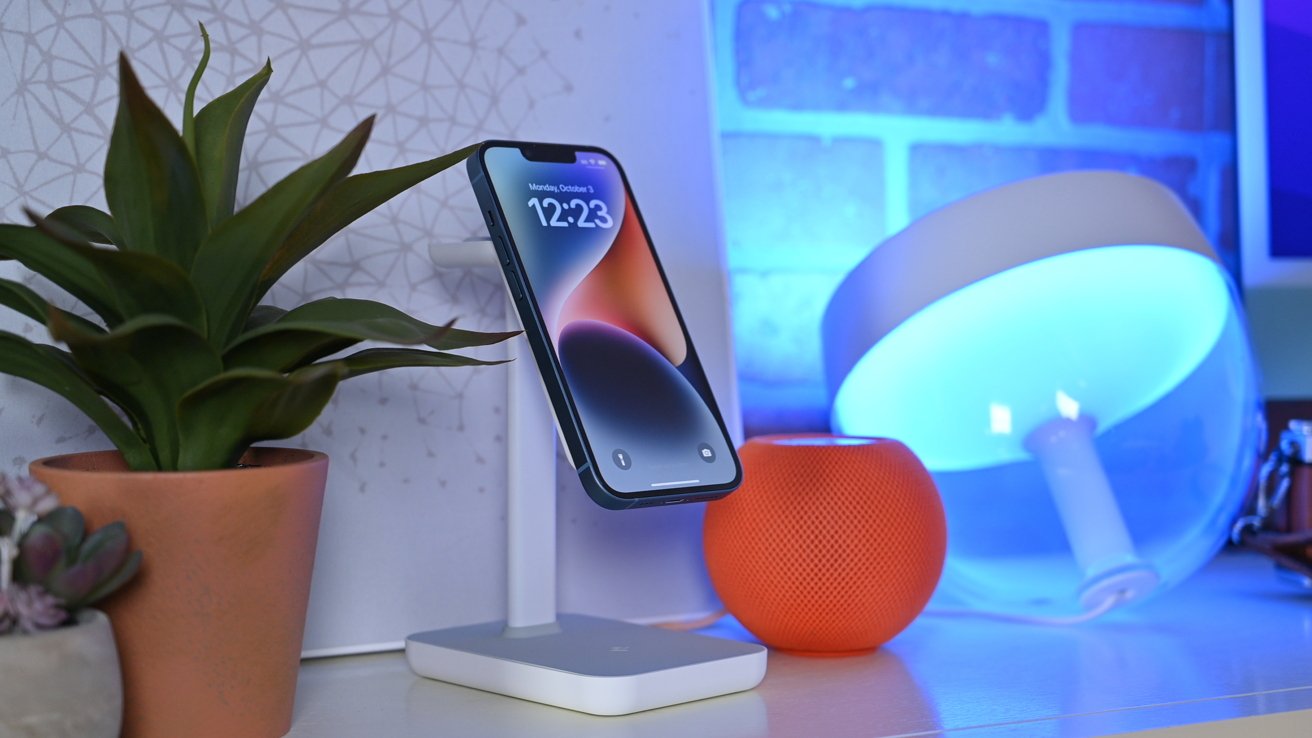 Holdouts with two or three year old devices will find this to be a good upgrade
Holdouts with two or three year old devices will find this to be a good upgradeApple reused the A15 Bionic found in iPhone 13 Pro models for the base model iPhone 14 models. It is an increase in performance year over year, but only just.
Anyone upgrading from an iPhone 13 won't find any reason to buy this device. It is a good product, but there are plenty of competitive options from Apple within striking distance.
Read the full iPhone 14 Review from AppleInsider and see why we gave it a 3.5 out of 5.
iPhone 14 Plus review
Apple replaced the iPhone mini with a 6.7-inch iPhone Plus, which was the best decision made in this product cycle. It offers a large-screen upgrade option for people who don't want to pay a "pro" premium.
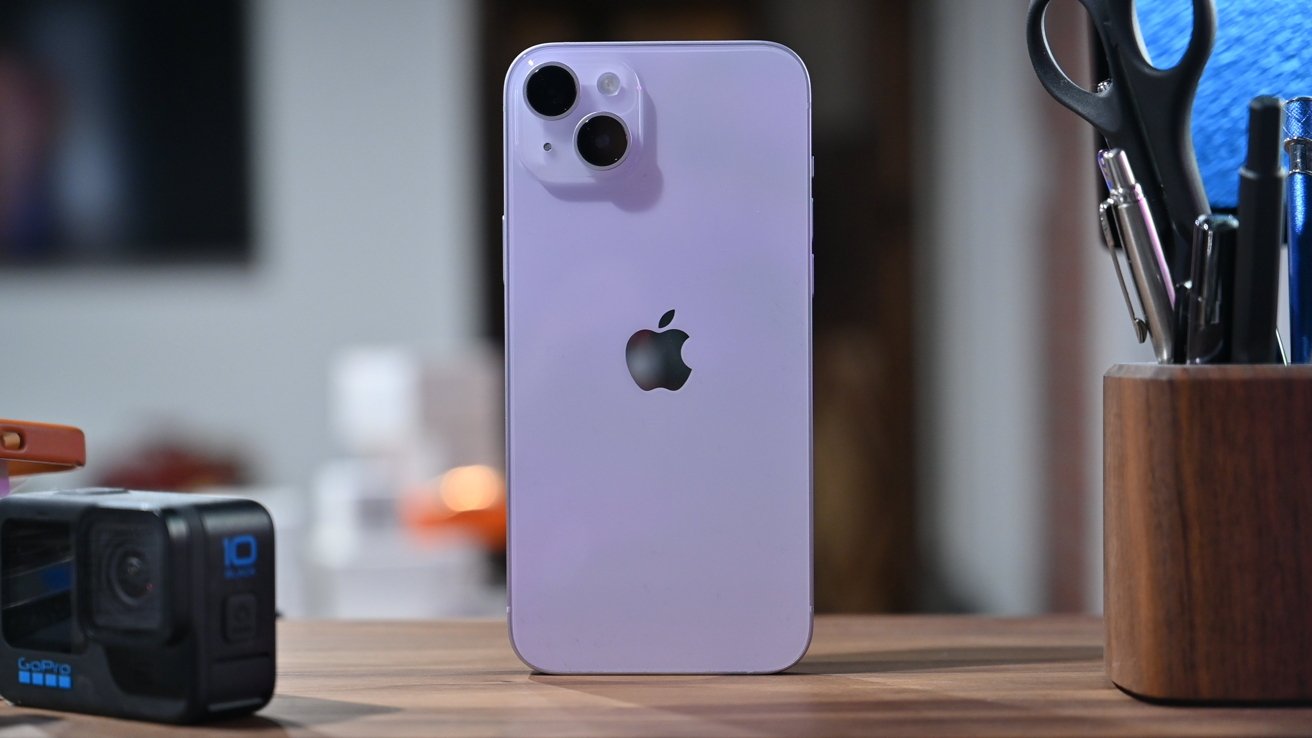 A bigger display with a basic feature set
A bigger display with a basic feature setThere's not a lot to distinguish the iPhone 14 Plus design beyond the larger display paired with a small camera bump. It has a bigger battery, which translates to excellent battery life, but most every other spec is borrowed from the standard model.
The return of the A15 Bionic is less notable in the larger iPhone since it scored nearly identical to the base model. Benchmarks show that despite using the year-old processor, Apple is ahead of the game in performance and graphics.
The camera system doesn't offer any surprises. The Main Camera got a larger sensor, and when combined with the Photonic Engine, translates to a 49% low-light performance improvement.
Other camera improvements include Cinematic Mode at 4K 30fps and Action Mode.
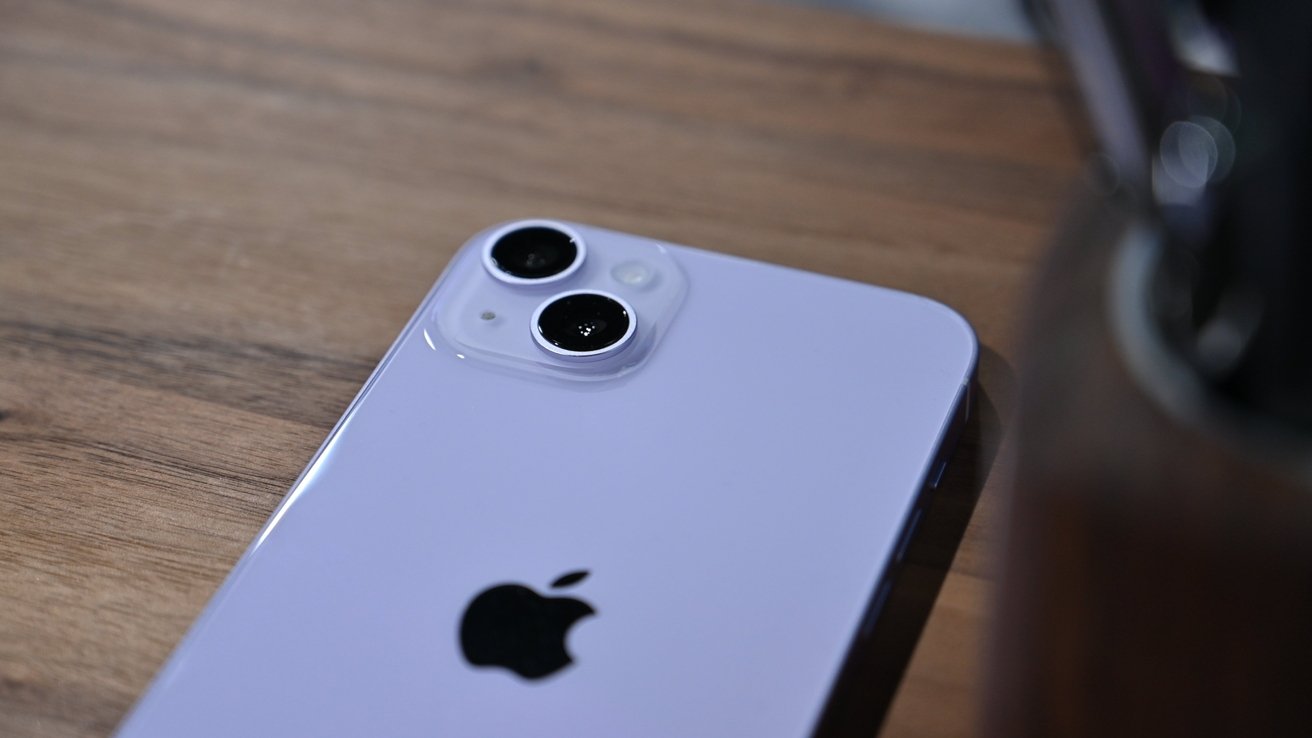 The smaller camera bump feels more proportional on a big iPhone
The smaller camera bump feels more proportional on a big iPhoneThe selfie camera also saw some improvements thanks to a better f/1.9 aperture. It also gains the other new capabilities like the Photonic Engine.
Crash Detection, Emergency SOS via Satellite, Bluetooth 5.3, and 5G are all included. These upgrades and features are identical to the other iPhone 14 models, so it doesn't bear repeating here.
There isn't much to say differently about a larger iPhone that has identical features to its counterpart. The products are so similar that it comes down to user preference on which they choose.
Read the full iPhone 14 Plus Review from AppleInsider and see why we gave it a 4 out of 5.
iPhone 14 Pro Review
The iPhone 14 Pro is a significant upgrade from the iPhone 13 Pro. The always-on display, Emergency SOS via satellite, Crash Detection, and the 48-megapixel camera are great additions on top of performance improvements.
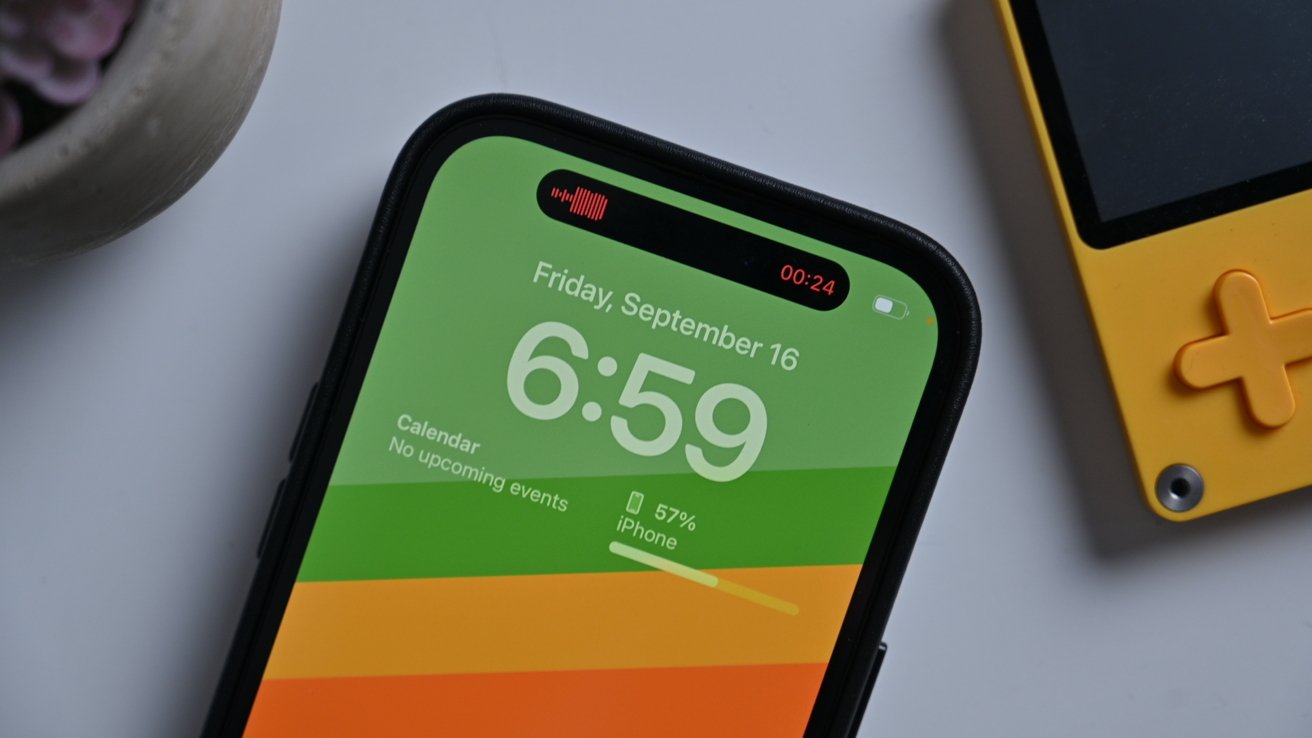 The Dynamic Island hides the display cutouts with software
The Dynamic Island hides the display cutouts with softwareThere isn't much difference externally between the new and old model. External dimensions are nearly identical, though the camera bump is bigger.
We like how Apple hid the display cutouts using software called Dynamic Island. Live Activities like now playing music or the Face ID indicator animate using the cutouts as a backdrop. The overall effect is enjoyable even if it is mostly passive.
The range of camera improvements centers around the new 48-megapixel sensor and the Photonic Engine. Every photo from every camera is noticeably improved, plus there's the 48MP ProRAW shooting option for maximum control.
The iPhone 14 Pro is the best iPhone in Apple's 2022 offering. It is the best balance of power and hold-ability in the range for most users.
Read the full iPhone 14 Pro Review from AppleInsider and see why we gave it a 4.5 out of 5.
iPhone 14 Pro Max Review
Apple took its popular flagship phone and made it even better with the iPhone 14 Pro Max. Like the smaller pro, it has an upgraded camera system, the Dynamic Island, and an always-on display.
These updates in a larger form-factor with a longer battery life make this the best big iPhone yet. We love how the Dynamic Island changes things up with an always-available view of Live Activities.
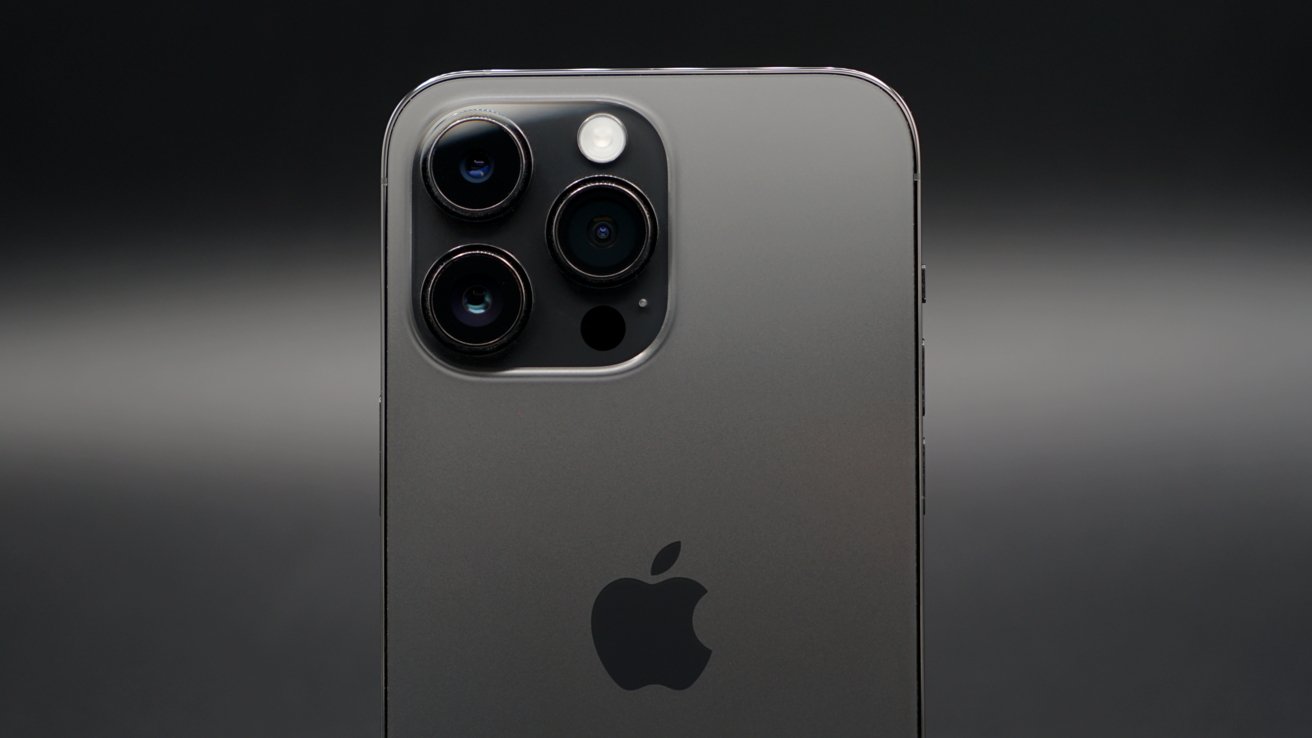 The updated camera system makes this a worthwhile upgrade for anyone who wants the best-possible photos from a smartphone
The updated camera system makes this a worthwhile upgrade for anyone who wants the best-possible photos from a smartphoneWhile the always-on display can sometimes feel a little too "on," it is a welcome new feature. At-a-glance information through widgets and Live Activities make the iPhone useful even when it's laying on a table.
There's not much to say about the larger model that hasn't been said about the smaller one. They have the same feature set with different screen sizes, so everything is here.
The 48MP Main Camera is a game changer, especially for those who are great with a camera. The brighter display, longer battery life, and emergency features are also welcome additions.
Our fingers are crossed for a USB-C charging port and better waterproofing in the "iPhone 15" for next year. For now, this is the best pro iPhone lineup yet.
Read the full iPhone 14 Pro Max Review from AppleInsider and see why we gave it a 4.5 out of 5.
Samsung Galaxy S23 Ultra vs iPhone 14 Pro Max
Samsung has gone all out with its flagship Galaxy S23 Ultra with a big 6.8-inch display and multiple powerful cameras. A lot of how the product performs will come down to ecosystem preference and user opinion, but this is a highly competitive product.
The Samsung Galaxy S23 Ultra has a 6.8-inch OLED display with a 3,088p by 1,440p resolution giving it a pixel density of 500 PPI. By comparison, the 2,556p by 1,179p resolution of iPhone 14 Pro and the 2,796p by 1,290p resolution of iPhone 14 Pro Max have equal densities of 460ppi.
Using Geekbench 6, the Galaxy S23 Ultra manages to get 1,817 single-core and 4,831 muli-core. By contrast, the iPhone 14 Pro's 2,333 single-core is 28% better than the Samsung, and the 5,107 multi-core score is 5.7% better too.
Samsung's impressive camera system with its 200MP Main Camera competes well with Apple's 48MP Main Camera, though both use pixel binning to produce crisp 12MP images. Samsung has a leg up for zoom, offering up to 100x zoom with algorithm-enhanced results.
Both cameras produce excellent photos, but user taste and preference will affect how they feel about the product.
Check out the full review with benchmarks, thoughts about the S Pen, and biometrics: iPhone 14 Pro vs Samsung Galaxy S23 Ultra - compared
Production problems
The 2022 iPhone production cycle went through a dramatic upheaval thanks to China's zero covid policy. Employees at a Zhengzhou Foxconn plant rioted after poor conditions during lockdown.
Production lines were subsequently shut down as employees left the company and hiring slowly filled the holes. It took until January 2023 before production stabalized and iPhone 14 Pro saw regular ship times.
Estimations place the impact on Apple's December quarter at about 13 million fewer iPhone units shipped year over year. This is an estimated 15% impact on revenue, which showed in the December quarter earnings.
iOS 18
Announced at WWDC 2024, iOS 18 is set to arrive in the fall alongside the iPhone 16. Here are some of the features users can expect to see.
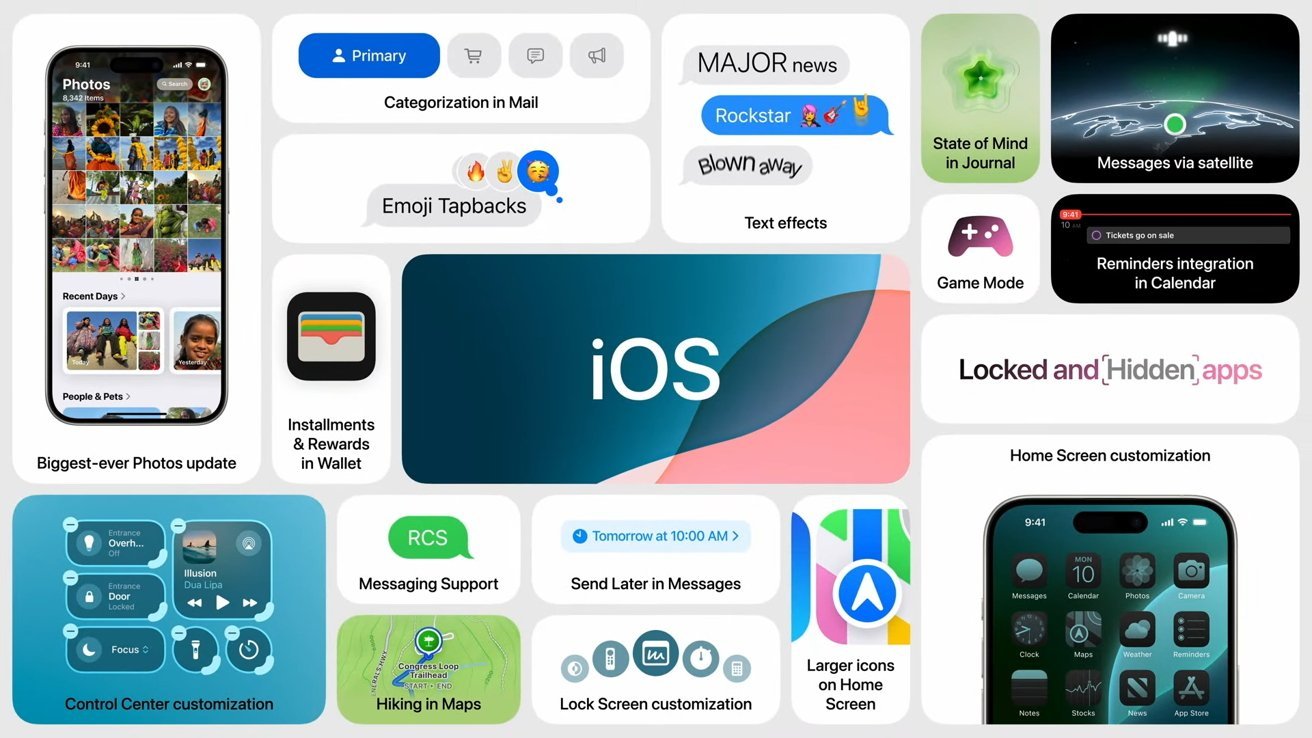 iOS 18 bento graphic
iOS 18 bento graphicApple Intelligence
The most notable upgrade to Apple's upcoming operating systems is the integration of what Apple calls "Apple Intelligence." Apple Intelligence is a personal context based artificial intelligence. It is designed to work primarily on-device and help streamline tasks in a personal way.
Some new features coming to the iPhone include on-device image generation, AI-powered writing and editing tools, and improved notification management.
It's worth noting that Apple Intelligence is only supported on the iPhone 15 Pro, M-series iPads, and M-series Macs. The limiting factor in iPhone is the A17 Pro and 8GB of RAM. So, no, there's won't be any AI features for iPhone 14, at least not at launch.
Photos update
A new Collections feature in iOS 18 automatically organizes the library by topics like Recent Days, Trips, and People & Pets. If you have a few favorite collections, you can pin them for quick access to the collections or albums most important to you.
The single-tab view is fully customizable, at least for the order of what shows up. Users can also choose which albums are prioritized in the top featured row.
Messages updates
Apple has expanded Tapback options, now allowing users to respond to messages with any emoji, rather than the initial six it provided.
The new Send Later feature allows users to schedule when to send a message, which is perfect for ensuring you don't send someone a message when they're sleeping or when you want to schedule a birthday or anniversary message.
Apple has confirmed that RCS support will arrive in iOS 18. RCS will improve messaging with Android devices by supporting read receipts, typing indicators, sending over Wi-Fi, and higher-quality media.
Those who have an iPhone 14 or later will be able to use Messages via satellite. This new feature will allow users to send messages over iMessage and SMS, even without cellular or Wi-Fi service.
When using iMessage, users can still use key features like sending emoji and Tapbacks, and anything sent via iMessage is end-to-end encrypted.
Game Mode
In 2023, Apple introduced Game Mode to Mac — and a year later Game Mode is coming to the iPhone.
Game Mode minimizes background activity while gaming. This allows the iPhone to sustain high frame rates for long gaming sessions.
Any time a user is in a game, be it Sudoku or Genshin Impact, game mode will turn on automatically unless the user disables the feature.
Locked and Hidden apps
Users can lock apps and require Face ID, Touch ID, or a passcode to unlock them, lessening the fear of handing off your iPhone to someone else. Locked apps will not appear in search and notifications, either.
Apps can also be hidden by dragging them to a hidden apps folder, requiring users to unlock the folder via biometrics or passcode before viewing the contents.
Home Screen, Lock Screen, and Control Center customization options
Now, on the Lock Screen, you can replace the controls at the bottom with something else, such as taking a note or quickly capturing a moment for your social media. If you have an iPhone 15 Pro, you can access these controls using the Action button.
As part of the expanded customization features, app icons, and widgets can now be scaled up to appear larger.
Users are no longer restricted to the standard app icon layout anymore. The new iOS 18 adds the ability to arrange apps along the bottom for quicker access or along the side to frame a favorite wallpaper.
Each page of the Home Screen can feature a unique layout.
iPhone 14 lineup Pricing
Both iPhone 14 Pro and iPhone 14 Pro Max are available in deep purple, silver, gold, and space black. Storage can be configured to 128GB, 256GB, 512GB, or 1TB.
The iPhone 14 Pro starts at $999 and the iPhone 14 Pro Max starts at $1,099. These devices began shipping to customers on September 16, 2022.
Both the iPhone 14 and iPhone 14 Plus are available in blue, purple, midnight, starlight, and (PRODUCT)RED. Storage can be configured to 128GB, 256GB, or 512GB.
The iPhone 14 starts at $799 and began shipping to customers on September 16, 2022. The iPhone 14 Plus starts at $899 and shipped on October 7.
Previous rumors
The rumor cycle for iPhone 14 started early. Just days before Apple announced the iPhone 13 lineup, Jon Prosser shared an image of the 2022 iPhone.
However, this image was a far cry from what was ultimately announced. There were just too many technological advancements that would be needed for it to be possible.
The alleged design showed that the camera bump was gone, a single camera cutout had replaced the notch, and the sides resembled an iPhone 4.
After this render made the rounds for a few weeks, more realistic rumors appeared. Apple would retain the iPhone 13 design, keep the notch, and even offer the same processor in its next device.
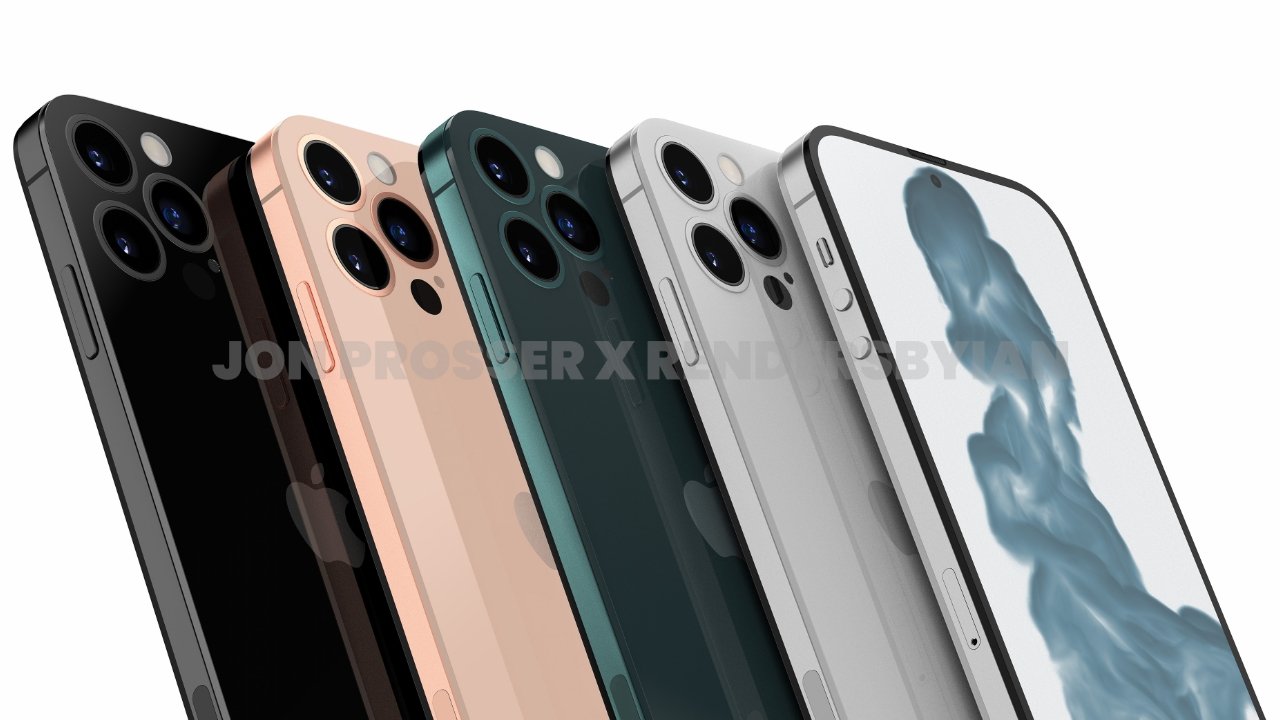 Renders from Jon Prosser show drastic design alterations for the 'iPhone 14'
Renders from Jon Prosser show drastic design alterations for the 'iPhone 14'Very little was shared about what would actually change in the base models, just that Apple would abandon the mini size for a "Max" or "Plus" with a 6.7-inch display.
Ultimately, Apple leaned on camera improvements, satellite communications, and crash detection as new tentpole features. Big changes are expected for "iPhone 15" too, namely adding a USB-C port, but only time will tell.
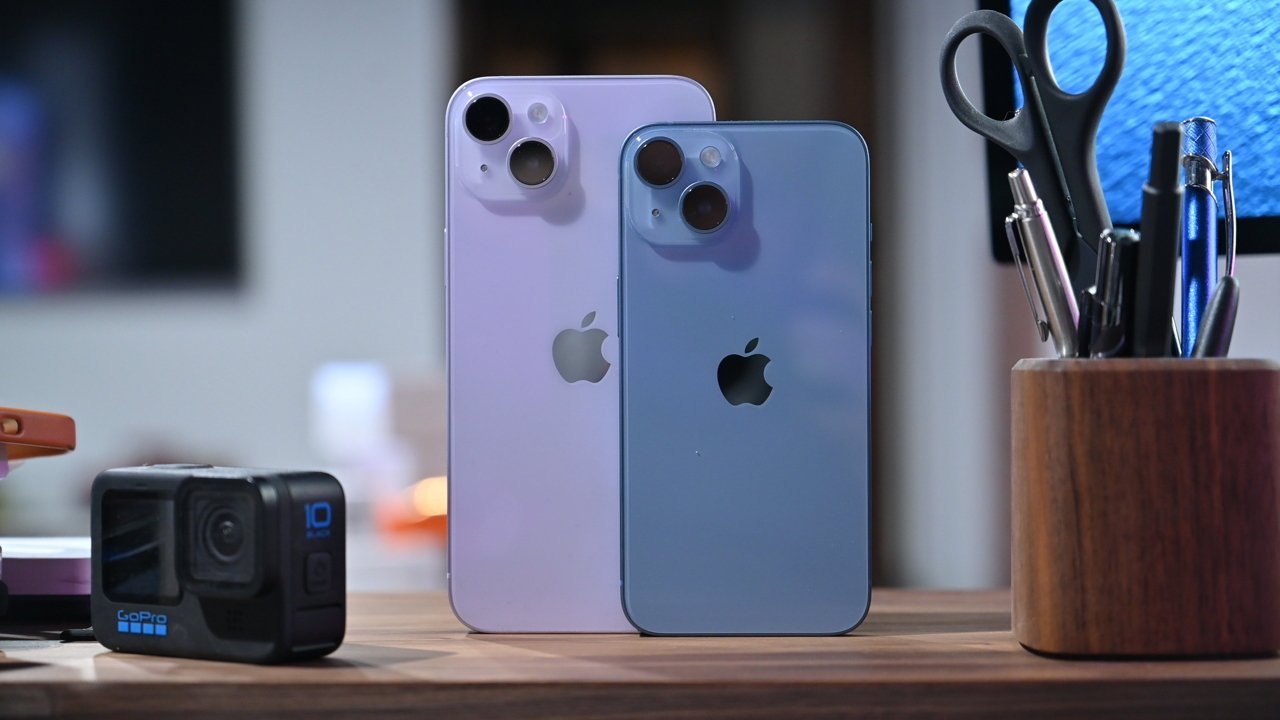
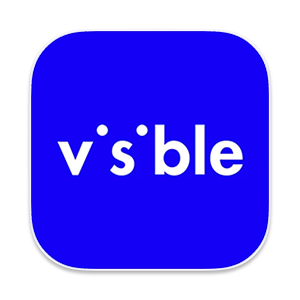
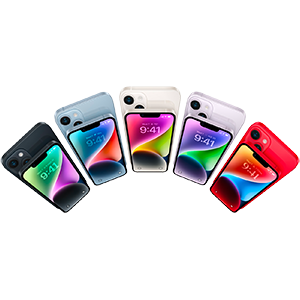

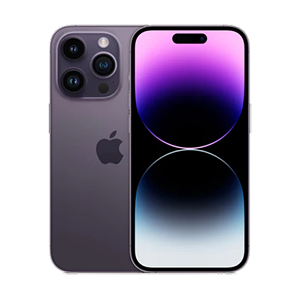

 Marko Zivkovic
Marko Zivkovic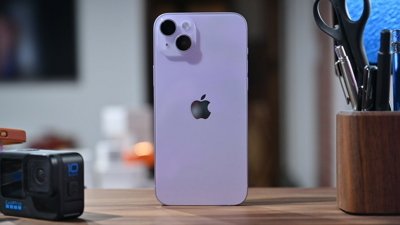
 Charles Martin
Charles Martin
 William Gallagher
William Gallagher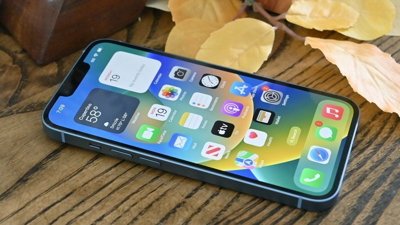

 Malcolm Owen
Malcolm Owen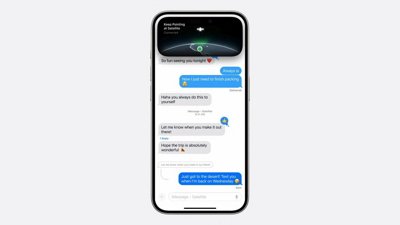
 Amber Neely
Amber Neely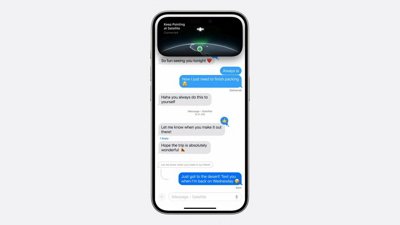
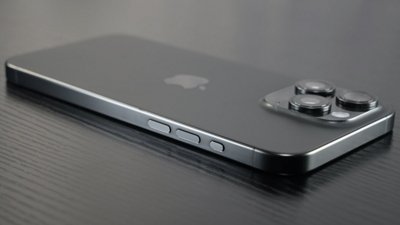
 Andrew Orr
Andrew Orr